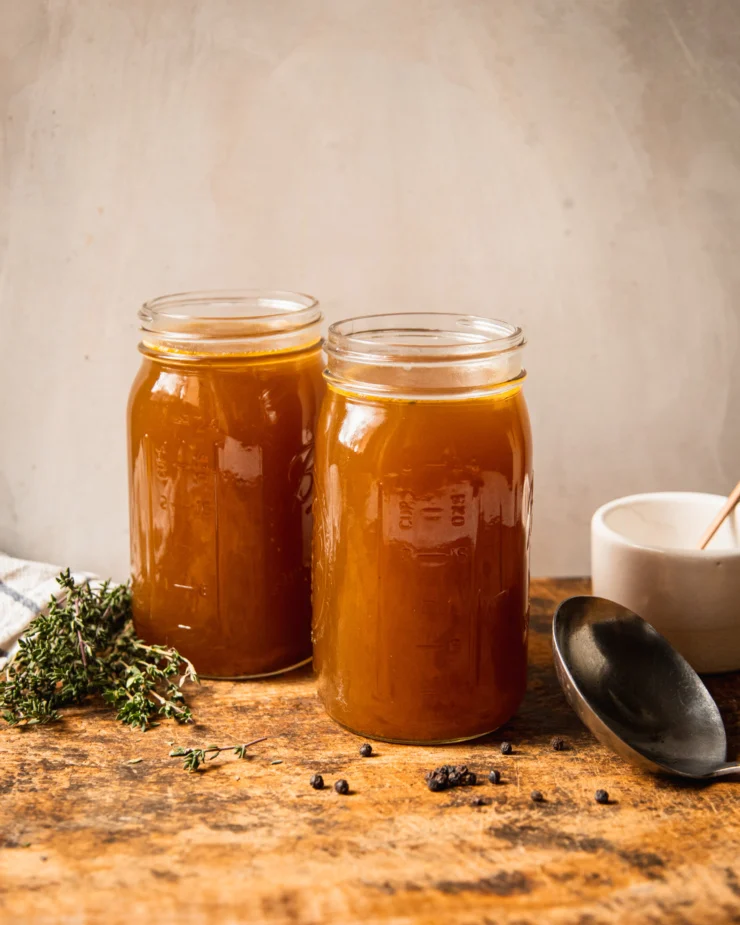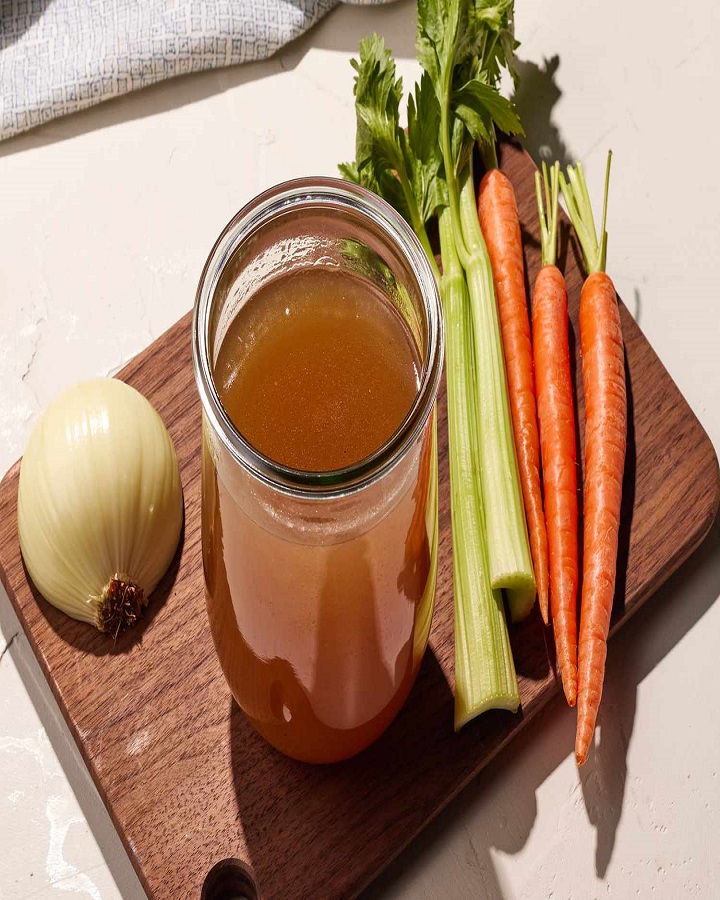
Image Credit – CJ Caldwell
When it comes to healthy, flavorful cooking, few ingredients are as versatile and essential as vegetable stock. Whether you’re making soups, stews, risottos, sauces, or even cooking grains like rice or quinoa, a good vegetable stock can take your dish to the next level. It’s a plant-based alternative to chicken or beef stock and can be customized with a variety of vegetables, herbs, and spices depending on your taste. Best of all, it’s a great way to reduce food waste by using vegetable scraps you might otherwise throw away.
Vegetable stock is a great substitute for water when making a soup or sauce. It does not have the same strong flavor that a beef, chicken, or fish stock would have. It can be used as a braising liquid for vegetables, as the liquid base in a soup, or as a deglazing liquid when sautéing meats or vegetables.
Vegetable Stock

Prep Time10 minsCook Time35 minsTotal Time45 mins
Ingredients:
- 2 tbsp unsalted butter
- 1 red onion (about 8 ounces), roughly chopped into 1-inch pieces
- 2 stalks celery (about 4 ounces each), roughly chopped into 1-inch pieces
- 2 carrots (about 4 ounces each), peeled and roughly chopped into 1-inch pieces
- 6 cloves garlic, chopped
- 2 qts water
- 6 sprigs fresh parsley
- 6 sprigs fresh thyme
- 2 bay leaves
- 1 tsp salt
Directions:
- In a stockpot, heat the butter over medium heat for 1 to 2 minutes. Add the onion, celery, carrots, and garlic and sauté for 2 to 3 minutes, stirring frequently.
- Pour in the water and stir. Add the parsley, thyme, bay leaves, and salt and stir once more. Bring to a boil, then reduce the heat to a simmer and continue to simmer for 30 to 35 minutes.
- Line a colander with cheesecloth and set over a heatproof container. Pour the stock through the colander into the container; discard the vegetables.
- Store the vegetable stock in an airtight container in the refrigerator for up to 1 week, freeze for up to 2 months.
Why You Should Make Your Own Vegetable Stock
Making your own vegetable stock is easier than you might think. Unlike store-bought versions, homemade stock contains no preservatives, artificial flavorings, or excessive sodium. It’s also cost-effective, especially if you’re using leftover peels, ends, and trimmings from other meals. Common ingredients include onions, carrots, celery, garlic, leeks, parsley, bay leaves, and peppercorns. You can add mushrooms for extra umami or tomatoes for depth and color.
Simply simmer everything in water for about 45 minutes to an hour, then strain. You can store your stock in the fridge for up to 5 days or freeze it in portions for later use. Ice cube trays or freezer-safe containers work great for easy access.
Vegetable stock is more than just a cooking liquid—it’s the foundation for countless healthy and delicious meals. Making it at home is simple, sustainable, and far superior in taste to most store-bought options. Whether you’re an experienced home cook or just starting out, learning to make your own stock is a skill worth mastering.
Give it a try, and let us know in the comments how you like to make your vegetable stock or what dishes you love using it in!
Frequently Asked Questions
What’s the difference between vegetable stock and vegetable broth?
Can I use vegetable stock in place of chicken or beef stock?
What vegetables should I avoid in vegetable stock?

Vegetable Stock
Ingredients
Method
- In a stockpot, heat the butter over medium heat for 1 to 2 minutes. Add the onion, celery, carrots, and garlic and sauté for 2 to 3 minutes, stirring frequently.
- Pour in the water and stir. Add the parsley, thyme, bay leaves, and salt and stir once more. Bring to a boil, then reduce the heat to a simmer and continue to simmer for 30 to 35 minutes.
- Line a colander with cheesecloth and set over a heatproof container. Pour the stock through the colander into the container; discard the vegetables.
- Store the vegetable stock in an airtight container in the refrigerator for up to 1 week, freeze for up to 2 months.
Leave a Reply